
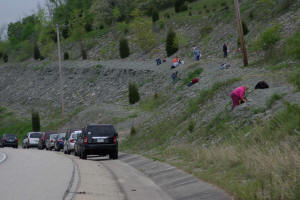
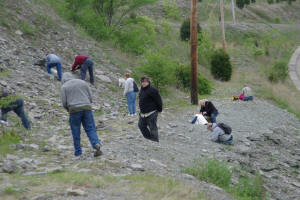
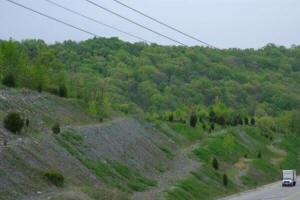
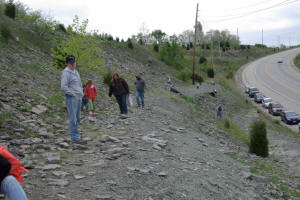
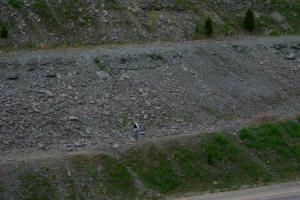
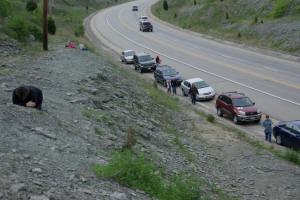
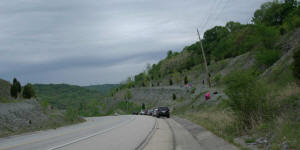
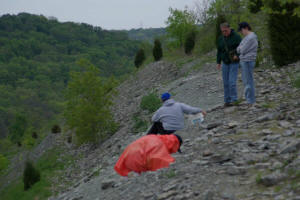
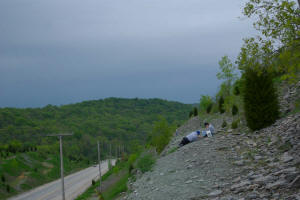
Our 70th anniversary field trip was to our favorite Richmondian site, just over the Indiana border from Cincinnati. Rain threatened but did not come for the first hour we were out there. Normally, all field trips are rain or shine and we don't cancel a field trip in the middle because it begins to rain. But in this case a thunderstorm moved in with dangerous lightning. So we asked everyone to go to their cars and the field trip was officially ended.
Here are some photos of us collecting, in case anyone who didn't come because they knew it was going to rain, doubts us.
Fossils Found That Day
In the hour we were there, we still had good pickings. At the top of the road
cut, a few horn coral can be found. One of our youngest members found this nice
example of Grewingkia canadensis.
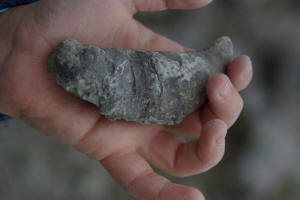
Trilobites
The "usual suspects" on trilobites were found.
At least one whole enrolled
Flexicalymene retrorsa was found.
(2 pics below)
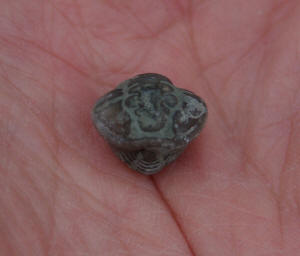
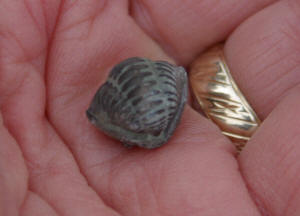
Fragments of the large trilobite
Isotelus were found. In these next 2 pics, you can see both sides of one lobe of the hypostome (mouth plate).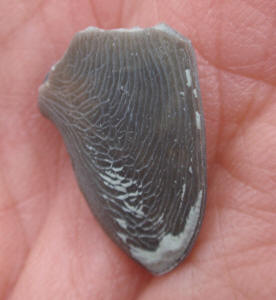

Here are some more fragments of Isotelus that are less identifiable
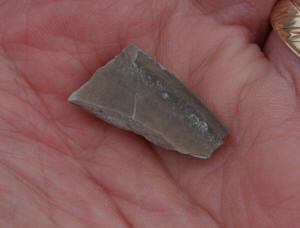
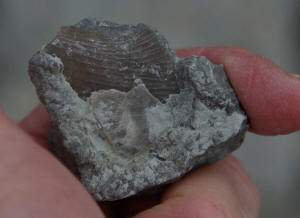
Crinoids
No whole calyxes (heads) of crinoids were found as far as I
know, but here's a nice fragment of a calyx of
Glyptocrinus fornschelli.
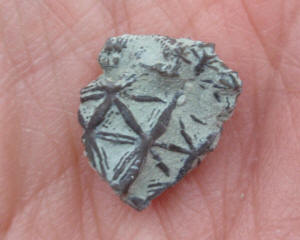
A less identifiable calyx fragment was found (shown below).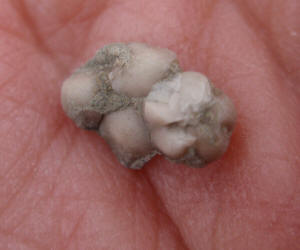
Lots of stem fragments were found. Here is sitting waiting to
be picked up. No it was not picked up. So get out there and get it.
Gastropods (Snails)
Mostly internal molds of gastropods were found. This next one is pyritized. Probably a Paupospira.
Most snail internal molds are filled in with the same shale in which they were entombed.
Brachiopods
The Richmondian series of formations is known for their numerous varieties of brachiopods. This trip demonstrated that.
Here's an example of
Plaesiomys
subquadratus that was found.
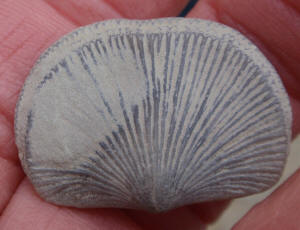
This next picture is small and blurry, but I think it's of
another Plaesiomys subquadratus and a
fragment of some other brachiopod.
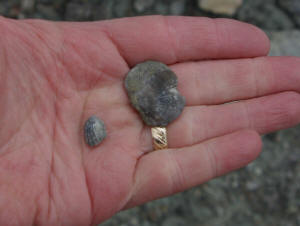
This next picture shows a rock surface covered with the
impressions of what are either brachiopods or clams. I would conjecture that
most are the impressions of the sowerbyellid brachiopod
Eochonetes. I base this
on the fact that in the lower left corner of the slab are examples of this brach
still resting in their indentations.
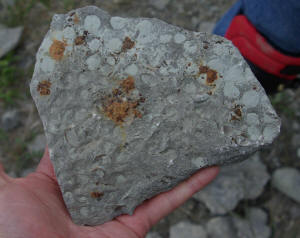
Trace Fossils
Trace fossils abound on this sites as they do on most
type-Cincinnatian sites. In the picture below, burrows can be seen filled in
with shale throughout this hard limestone slab. I'm not going to guess at the
animal(s) that made these tracks. He or she knows who they are.
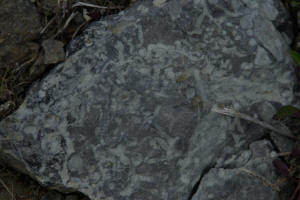
Now let's see our May 2012 field trip to the famous Mt. Orab Trilobite Farm.
See photos of previous field trips to this Southeast Indiana fossil Mecca.
May 2011
March 2010
September 2008
September 2007
September 2006
March 2006
March 2004
October 2003
April 2002
Back to the Field Trip Index Page
Return to Dry Dredgers Home Page
The Dry Dredgers and individual contributors reserve the
rights to all information, images, and content presented here. Permission to
reproduce in any fashion, must be requested in writing to admin@drydredgers.org.
www.drydredgers.org is designed and maintained by Bill Heimbrock.